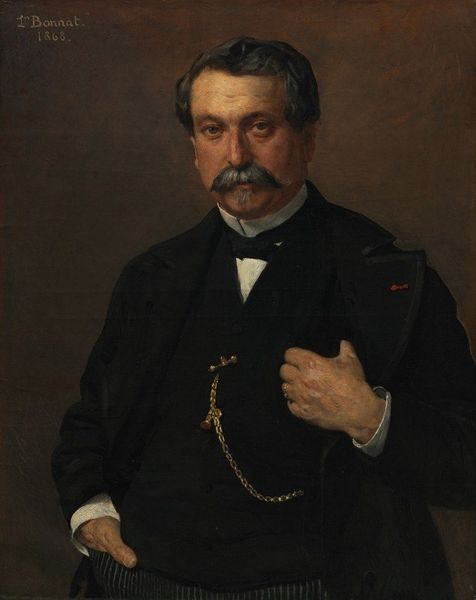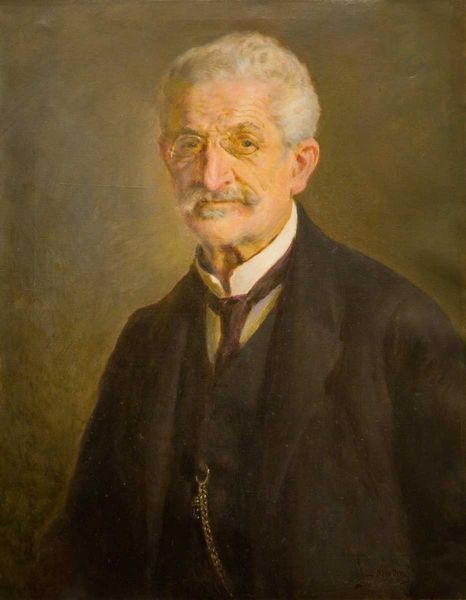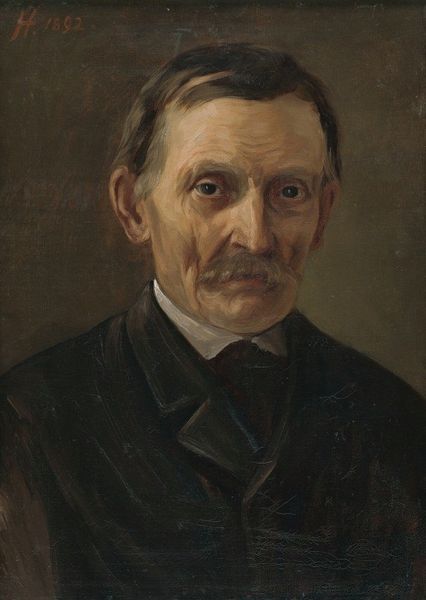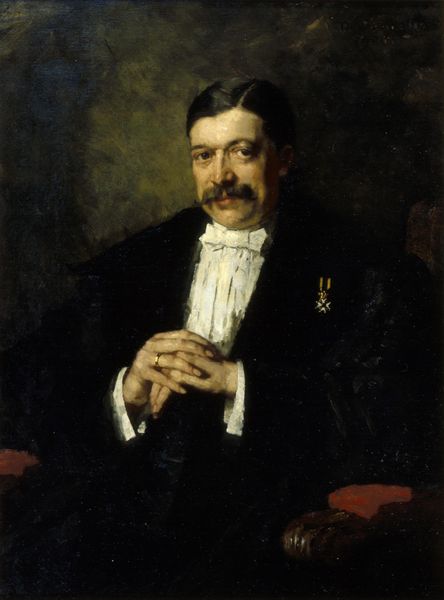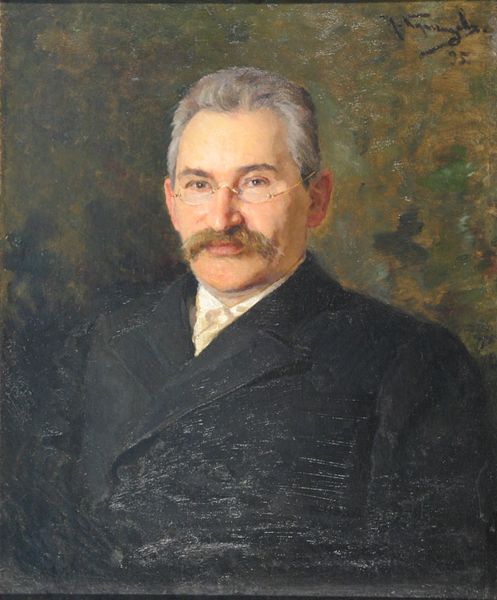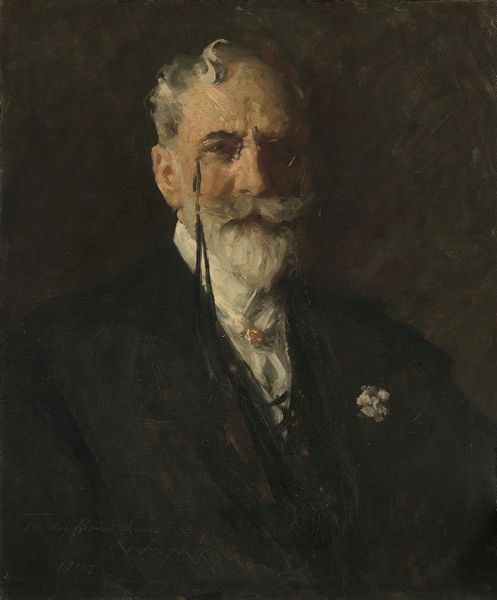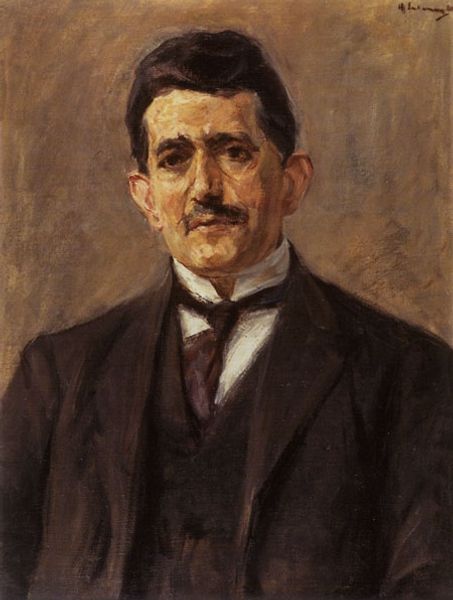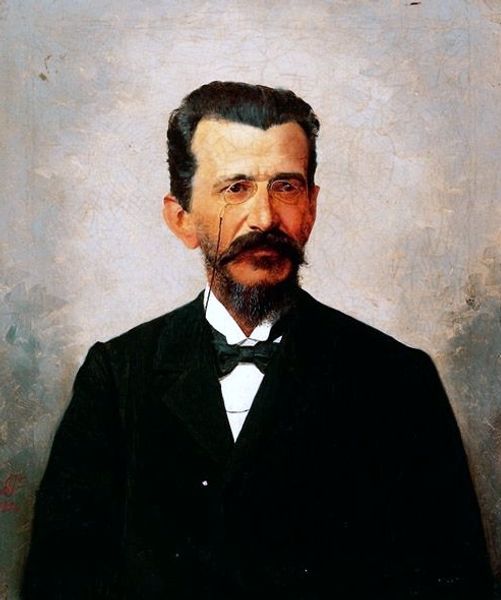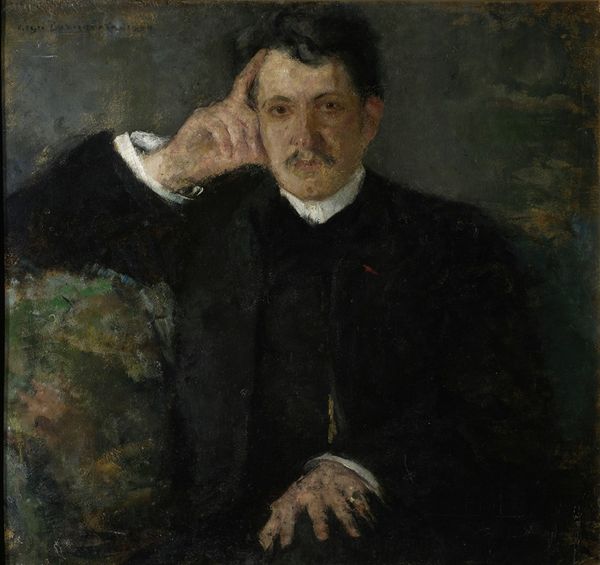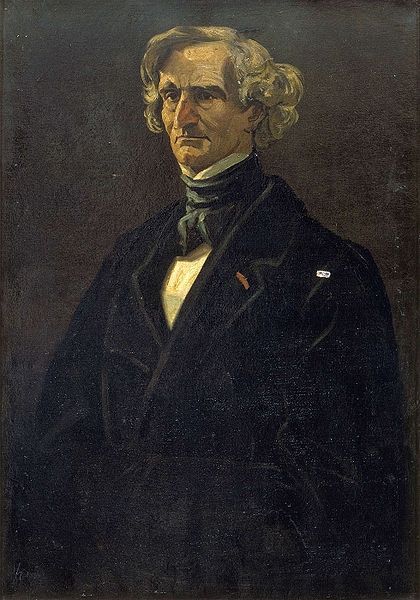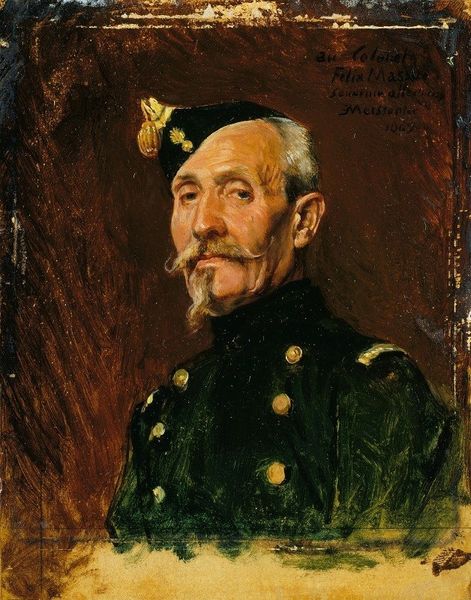
Copyright: Public domain
Ivan Konstantinovich Aivazovsky painted this portrait of Khalibjan, mayor of New Nakhichevan, in 1862. It provides a glimpse into the visual culture of 19th-century Russia, particularly its representation of civic leaders and their place within the imperial structure. The portrait creates meaning through the visual codes of power and status. Khalibjan's formal attire, complete with medals, signifies his position and loyalty to the state. Consider the historical context: New Nakhichevan was a town with a significant Armenian population within the Russian Empire. This portrait reflects the complex interplay between local identity and imperial authority. The choice to depict Khalibjan in this manner speaks to the social and political dynamics of the time, reflecting the negotiation of power between the Armenian community and the Russian administration. To fully understand this work, we can examine archival records of New Nakhichevan, studies of Russian imperial administration, and the history of Armenian communities within the empire. The meaning of art is contingent on its social and institutional context, and historical research can illuminate these connections.
Comments
No comments
Be the first to comment and join the conversation on the ultimate creative platform.
